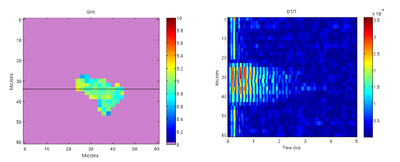Nano ultrasonics
PhD Nano ultrasonics
At very high frequencies the wavelength of sound waves can become smaller than the wavelength of light, this opens up myriad new opportunities for measuring, imaging and interacting with the nanoscale environment, especially for biological applications.
This is an innovative and exciting new research area in an internationally-leading laboratory with challenging and rewarding research opportunities.
Applicants should have or expect a first class or good 2.i undergraduate or masters degree in a related area: EEE, physics, chemistry, biology, engineering or nanoscience. They should be numerate, computer literate, self-starting and have an imaginative approach to problem solving.
While specific direction of the projects will be tailored to the applicants' strengths, all applicants should possess excellent communication skills, be capable of working as part of an established multidisciplinary team, be self-starting and be highly motivated.
As part of a major EPSRC funded project into using nano-ultrasonics applications are invited for PhD studentships funded by the University of Nottingham. The studentships will cover PhD tuition fees and a tax-free stipend for three years (£13,863 for the 2014-15 academic year) for UK/EU students. Overseas students may be able to attract funding through University scholarships.
Further information from Matt Clark.


